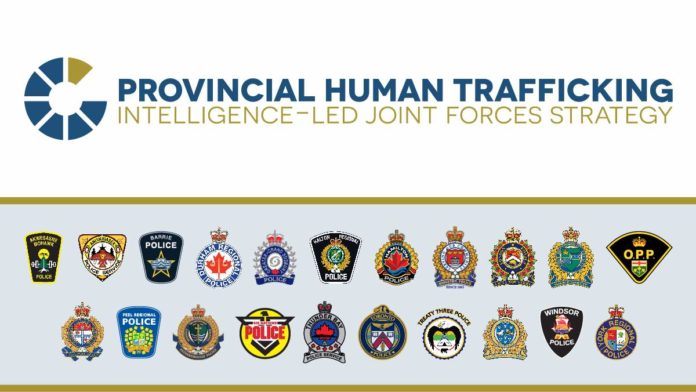Ontario marked World Day Against Trafficking in Persons on July 30 by announcing major enforcement results and renewed investments aimed at protecting vulnerable youth and communities across the province.
The Provincial Human Trafficking Intelligence-Led Joint Forces Strategy (IJFS) reported significant outcomes from a series of proactive investigations conducted over the past 18 months. IJFS-participating police services coordinated operations across Ontario, targeting individuals attempting to purchase sexual services from young people.
Police officers posed as vulnerable youth in efforts to disrupt illegal activity and reduce the demand for commercial sexual exploitation. As a result of the investigations, 80 individuals were arrested and charged with a combined 165 Criminal Code offences.
The province also announced it would invest $345 million to renew its Anti-Human Trafficking Strategy (AHTS), the largest investment of its kind in Canada. Since its launch in 2020, the strategy has trained more than 1,000 front-line workers and supported tens of thousands of survivors and children who were being, or were at risk of being, trafficked.
As part of the strategy, the province officially launched a new Children at Risk of Exploitation (CARE) Unit in Kenora on July 30. The unit will help protect youth in northwestern Ontario from sex trafficking and connect survivors with services.
“Our government is proud to renew Ontario’s historic Anti-Human Trafficking Strategy,” said Michael Parsa, Minister of Children, Community and Social Services. “The launch of the Kenora CARE Unit is part of our plan to ensure vulnerable people can get support in every corner of our province.”
Ontario’s AHTS is centred on four pillars: awareness and prevention, protecting victims, supporting survivors and holding offenders accountable. CARE Units, first established in Toronto and Durham Region, include child protection workers, police officers and Indigenous liaisons who work together to locate youth who are being trafficked or are at risk, and support related investigations. The units currently serve more than 200 children ages 12 to 17 each year.
The new CARE Unit in Kenora will be led by Anishinaabe Abinoojii Family Services and Kenora-Rainy River Districts Child & Family Services, in collaboration with the Kenora OPP Detachment and the OPP’s Anti-Human Trafficking team.
The province is investing $6 million over three years to support the Kenora CARE Unit. This includes a new licensed out-of-home care residence for survivors and a Youth-In-Transition Worker focused on anti-human trafficking in the region.
“The Kenora CARE Unit will help ensure that those tasked with protecting children and youth have the tools needed to act swiftly to prevent sex trafficking and connect survivors to the supports they deserve,” said Solicitor General Michael Kerzner.
Kenora was selected due to risk factors such as its airport, highways, proximity to the provincial border and popularity as a summer destination. The unit will also receive support from Tikinagan Child and Family Services and Weechi-it-te-win Family Services.
According to the province, the most common form of human trafficking in Ontario is sex trafficking. The average age of recruitment into sex trafficking in Canada is just 13 years old.
In the first four years of Ontario’s strategy, service providers helped more than 29,000 people affected by human trafficking.
















